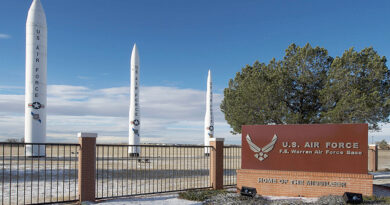History of Phoenix Arizona
Phoenix, Arizona, known as the “Valley of the Sun,” is one of the largest and fastest-growing cities in the United States. Its history is a fascinating tale of ancient civilizations, pioneering settlers, and rapid urban development. From its origins as a Native American settlement to its emergence as a bustling metropolis, Phoenix has undergone remarkable transformations that have shaped its identity and place in the American Southwest.
Ancient Beginnings: The Hohokam Civilization
Long before European settlers arrived in the region, the area now known as Phoenix was home to the Hohokam people, a highly advanced Native American civilization. The Hohokam lived in the Salt River Valley from around 300 AD to 1450 AD, and they were known for their extensive and sophisticated irrigation systems. These canals, some of which are still in use today, allowed the Hohokam to cultivate crops such as corn, beans, and cotton in the arid desert environment.
The Hohokam built large, complex villages and engaged in extensive trade with neighboring cultures. However, by the 15th century, the Hohokam civilization mysteriously declined, leaving behind a network of abandoned canals and ruins. The reasons for their decline remain a subject of debate among historians and archaeologists, with theories ranging from prolonged droughts to social upheaval.
Early European Exploration and Settlement
The first European to explore the area was Spanish missionary Father Eusebio Francisco Kino in the late 17th century. However, it wasn’t until the mid-19th century that European settlers began to establish a presence in the region. The area was part of the Mexican territory until the Treaty of Guadalupe Hidalgo in 1848, when it was ceded to the United States following the Mexican-American War.
In 1863, the U.S. government established the Arizona Territory, and by the 1860s, American settlers began to arrive in the Salt River Valley. The first settlers were primarily farmers and ranchers who were drawn to the area’s fertile land and the potential for agriculture, despite the challenging desert environment.
The Founding of Phoenix
The city of Phoenix was officially founded in 1867 by Jack Swilling, a Confederate veteran who recognized the potential of the Salt River Valley for agriculture. Swilling and other early settlers began the task of reconstructing and expanding the ancient Hohokam canals to irrigate their crops. They named the new settlement “Phoenix,” symbolizing the city’s rise from the ruins of the ancient Hohokam civilization.
Phoenix quickly grew as an agricultural community, producing crops such as cotton, alfalfa, and citrus. The establishment of a post office in 1868 and the incorporation of the city in 1881 marked the early stages of its development. By the late 19th century, Phoenix had become the commercial and political center of the Arizona Territory.
Growth and Development in the 20th Century
The arrival of the railroad in 1887 was a turning point for Phoenix, connecting the city to national markets and facilitating the shipment of agricultural products. This development spurred population growth and economic expansion. In 1912, Arizona achieved statehood, and Phoenix was designated as the state capital, further cementing its importance.
The early 20th century saw Phoenix’s transformation from a small agricultural town to a burgeoning city. The introduction of air conditioning in the 1930s made the desert climate more bearable, attracting new residents and businesses. World War II also played a significant role in the city’s growth, as military bases and defense industries were established in the area, bringing jobs and infrastructure improvements.
After the war, Phoenix experienced a population boom, driven by a combination of factors including the growth of the aerospace industry, the availability of affordable land, and the appeal of the warm climate to retirees and tourists. The city expanded rapidly, with new suburbs, shopping centers, and highways transforming the landscape.
Modern Phoenix: A Thriving Metropolis
In the latter half of the 20th century, Phoenix continued to grow at an astonishing rate. By the 1970s, it had become one of the largest cities in the southwestern United States. The city’s economy diversified beyond agriculture and defense, with significant growth in industries such as real estate, manufacturing, and technology.
Phoenix’s population explosion led to a sprawling urban environment, with the city’s boundaries extending far beyond its original core. This growth brought challenges, including the need for sustainable water management, transportation infrastructure, and environmental conservation. The Central Arizona Project, completed in 1993, was a major engineering feat that brought water from the Colorado River to the Phoenix metropolitan area, helping to secure the city’s water supply.
Today, Phoenix is a dynamic and diverse city, home to more than 1.7 million residents. It is known for its vibrant arts scene, outdoor recreational opportunities, and a strong economy driven by sectors such as technology, healthcare, and finance. The city’s downtown area has undergone significant revitalization, with new cultural institutions, sports arenas, and residential developments attracting residents and visitors alike.
Phoenix’s Cultural and Social Evolution
Phoenix’s growth has been accompanied by significant cultural and social changes. The city’s population is one of the most diverse in the nation, with a large Hispanic community and growing populations of African Americans, Asians, and Native Americans. This diversity is reflected in Phoenix’s cultural offerings, from its food scene to its festivals and public art.
The city has also played a role in the civil rights movement, particularly in the areas of education and labor rights. In the 1960s, Phoenix was a center of activism for Mexican American civil rights, with leaders such as Cesar Chavez organizing farmworkers in the surrounding agricultural areas.
In recent decades, Phoenix has embraced its role as a cultural hub, with institutions such as the Phoenix Art Museum, the Heard Museum, and the Arizona Science Center attracting visitors from around the world. The city’s sports teams, including the Phoenix Suns (NBA) and the Arizona Diamondbacks (MLB), also play a significant role in the city’s cultural identity.
Environmental and Urban Challenges
As Phoenix continues to grow, it faces significant challenges related to sustainability and urban planning. The city’s location in the Sonoran Desert means that water resources are limited, and managing this precious resource is a top priority for city planners. Initiatives to promote water conservation, renewable energy, and sustainable development are crucial as the city looks to the future.
Urban sprawl is another challenge for Phoenix, with the city’s rapid expansion leading to increased traffic congestion, air pollution, and the loss of natural habitats. Efforts to promote smart growth, improve public transportation, and preserve open spaces are key to ensuring that Phoenix remains a livable and attractive city.
Despite these challenges, Phoenix’s resilience and adaptability have enabled it to thrive in a harsh desert environment. The city’s ability to innovate and find solutions to its unique challenges is a testament to the spirit of its people and its leaders.
The Future of Phoenix
Looking ahead, Phoenix is poised for continued growth and development. The city’s strategic location, diverse economy, and vibrant cultural scene make it an attractive destination for businesses, residents, and tourists. As Phoenix continues to evolve, it will need to balance growth with sustainability, ensuring that future generations can enjoy the same opportunities and quality of life that have made the city a success.
Investment in infrastructure, education, and technology will be critical to Phoenix’s future, as will efforts to address social and economic disparities. By embracing its rich history and diverse culture, Phoenix can continue to be a beacon of progress and innovation in the American Southwest.
Conclusion
Phoenix’s history is a story of transformation and resilience. From its ancient roots as a Hohokam settlement to its emergence as a modern metropolis, the city has continually reinvented itself in response to changing circumstances. Today, Phoenix stands as a testament to the power of vision, determination, and community, rising from the desert to become one of the great cities of the United States.
As Phoenix looks to the future, it remains committed to preserving its unique character while embracing the opportunities and challenges of a rapidly changing world. With its rich history, diverse population, and innovative spirit, Phoenix will continue to shine brightly in the Valley of the Sun.
Discover more from City Towner
Subscribe to get the latest posts sent to your email.




